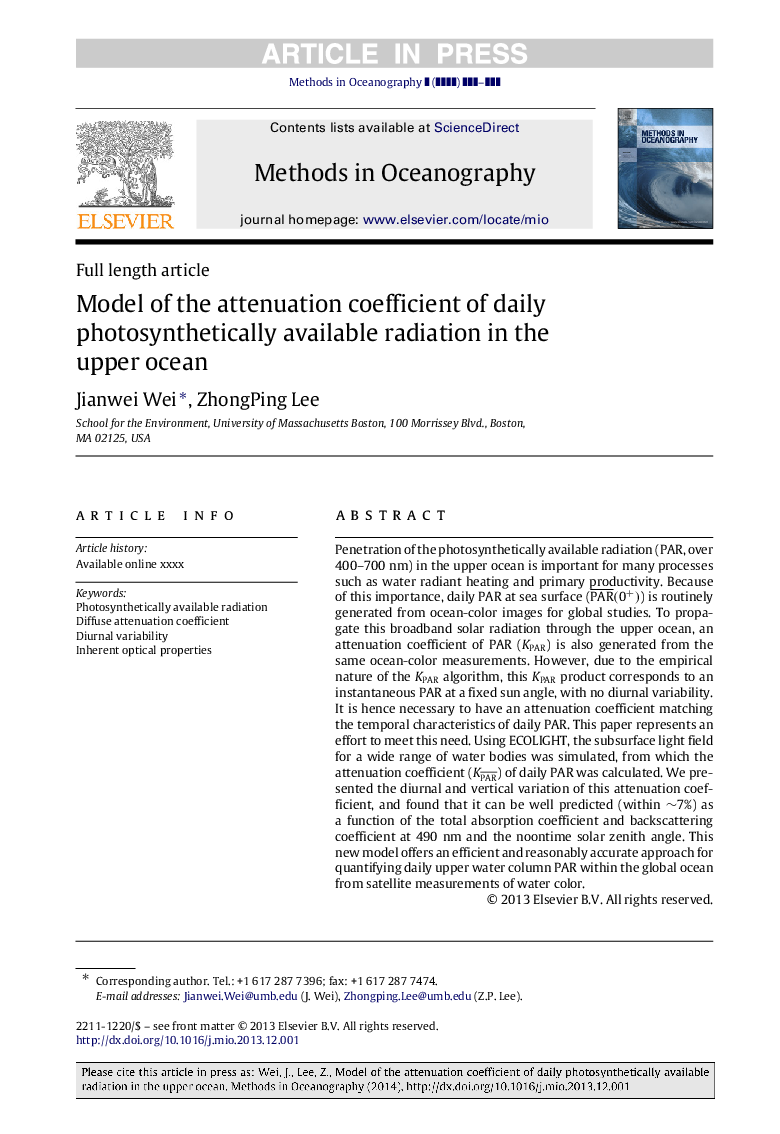| Article ID | Journal | Published Year | Pages | File Type |
|---|---|---|---|---|
| 8060471 | Methods in Oceanography | 2013 | 19 Pages |
Abstract
Penetration of the photosynthetically available radiation (PAR, over 400-700 nm) in the upper ocean is important for many processes such as water radiant heating and primary productivity. Because of this importance, daily PAR at sea surface (PAR¯(0+)) is routinely generated from ocean-color images for global studies. To propagate this broadband solar radiation through the upper ocean, an attenuation coefficient of PAR (KPAR) is also generated from the same ocean-color measurements. However, due to the empirical nature of the KPAR algorithm, this KPAR product corresponds to an instantaneous PAR at a fixed sun angle, with no diurnal variability. It is hence necessary to have an attenuation coefficient matching the temporal characteristics of daily PAR. This paper represents an effort to meet this need. Using ECOLIGHT, the subsurface light field for a wide range of water bodies was simulated, from which the attenuation coefficient (KPAR¯) of daily PAR was calculated. We presented the diurnal and vertical variation of this attenuation coefficient, and found that it can be well predicted (within â¼7%) as a function of the total absorption coefficient and backscattering coefficient at 490 nm and the noontime solar zenith angle. This new model offers an efficient and reasonably accurate approach for quantifying daily upper water column PAR within the global ocean from satellite measurements of water color.
Keywords
Related Topics
Physical Sciences and Engineering
Earth and Planetary Sciences
Oceanography
Authors
Jianwei Wei, ZhongPing Lee,
